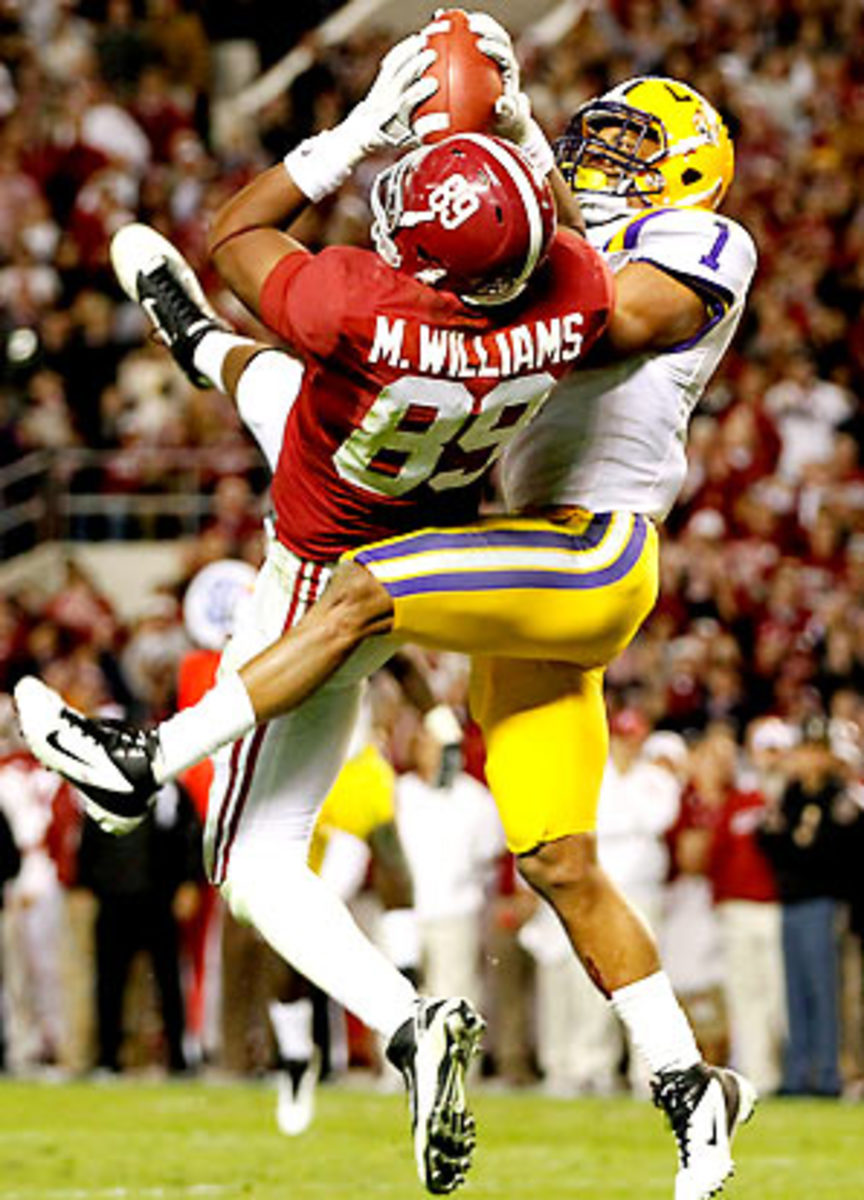Three ways both LSU, Alabama can score in BCS championship rematch


NEW ORLEANS -- Alabama coordinator Jim McElwain figures he had exactly one friend in the world on Nov. 5, when his offense failed to reach the end zone in a loss to LSU. "Thank God that my dog, Clarabelle, was there," McElwain joked. "She didn't really know that we didn't score. She was excited to see me when I got home."
McElwain's four-and-a-half pound "hunting dog" aside, few others came away from LSU's 9-6 overtime win in Tuscaloosa with confidence in either offense. The nation's two most dominant defenses essentially erased offenses that averaged 40.9 (LSU) and 38.7 (Alabama) points against everyone else. Alabama quarterback AJ McCarron referred to the Crimson Tide offense when he said the following, but he also could have been talking about LSU's offense.
"Second class -- compared to our defense," McCarron said. "That's all we ever hear about. Our defense. ... When you've got a great defense like that, your offense is overlooked. That's what we like. We kind of fly under the radar."
So how do two under-the-radar offenses avoid another slugfest? They don't. "I'd expect it to be big boy football," LSU coach Les Miles said. That doesn't mean the offenses won't score, though. It's quite difficult for two excellent teams to go through two meetings without at least one of them winding up in the end zone. LSU and Alabama may not light up the scoreboard the way Oregon and Wisconsin did in the Rose Bowl or Stanford and Oklahoma State did in the Fiesta Bowl, but one or both will find the end zone Monday. Here's how.
• The fear of the option game has forced Alabama to alter its defensive preparation: Jarrett Lee started at quarterback for the Tigers in the first meeting. Jordan Jefferson has started for LSU since. Jefferson allows the Tigers to run the option out of every formation, and this has boosted LSU's already-potent running game. In their first nine games, the Tigers averaged 184.4 rushing yards. In their past four, they've averaged 284.3. This probably changed Alabama's defensive preparation significantly. Stopping the option requires rep after rep of perfectly played assignments. Someone always has to tackle the quarterback, and someone always has to tackle the pitch man. The Crimson Tide have had more time to prepare, so that negates some of the advantage, but concern about the option has sucked time away from preparation for the other facets of LSU's offense. "It's time taken away from the I and two-tights," LSU offensive coordinator Greg Studrawa said. "It's them taking time away from other things that we do well."
• Kenny Hilliard has given LSU a fourth excellent option at tailback: The 240-pound freshman carried just twice as a fullback during the first meeting. In the past four games, he has averaged 5.8 yards per carry and scored six touchdowns. The Tigers still have Spencer Ware, Michael Ford and Alfred Blue, but near the goal line, they can hand off to cannonball Hilliard.
• When in doubt, Reuben Randle can win a jump ball: The 6-foot-4 Randle had two catches for 19 yards in the first meeting. Alabama has four future NFL starters in its secondary, but that's still far too little action for Randle, whose height, length and leaping ability give him a prohibitive advantage. Throw the ball in the correct (extremely high) place, and Randle will be the only player on the field who can catch it.
• The Crimson Tide can get the ball to Trent Richardson in space: Lost in the hoopla over LSU's defense holding Richardson to 89 rushing yards is the fact that Richardson gained 80 receiving yards on just five catches. In a game in which Alabama's average play gained 4.9 yards, Richardson averaged 16 yards per catch. As great as LSU's defense is, the Tigers don't have anyone who can tackle Richardson by himself in the open field. A short pass to Richardson out of the backfield can turn into a long gain.
• The worst mistakes made in the first game were anomalies: Alabama ranks No. 3 in the nation in fewest penalties committed, yet the Crimson Tide committed two boneheaded fouls in the first meeting against LSU. In the first quarter, the Tide broke the huddle with 12 men on first-and-10 from the LSU 23. The drive ended with a missed 50-yard field goal. Another substitution infraction in overtime forced the Tide to pass and took away the element of surprise. That drive ended with a 52-yard missed field goal. "We just let that game slip through our fingers and get away from us at the end," McCarron said. "We just didn't take advantage of our opportunities. We made a lot of mistakes. We had 12 men in the huddle twice, and that was something we hadn't done all year."
• Alabama has found another receiving weapon in tight end Brad Smelley: An Alabama tight end came the closest to actually scoring in the first meeting when Michael Williams jumped to catch a pass from Marquis Maze. Had Williams come down with the ball, Alabama would have won. But LSU safety Eric Reid ripped the ball from Williams' hands in midair. Alabama targeted the tight end more down the stretch, but that target was Smelley, who caught 10 passes for 140 yards and three touchdowns in the Tide's last two games. If Smelley can get matched up on a linebacker, he gives Alabama a chance to prove that even though it seems that way, LSU's defense didn't install a force field at the goal line.
